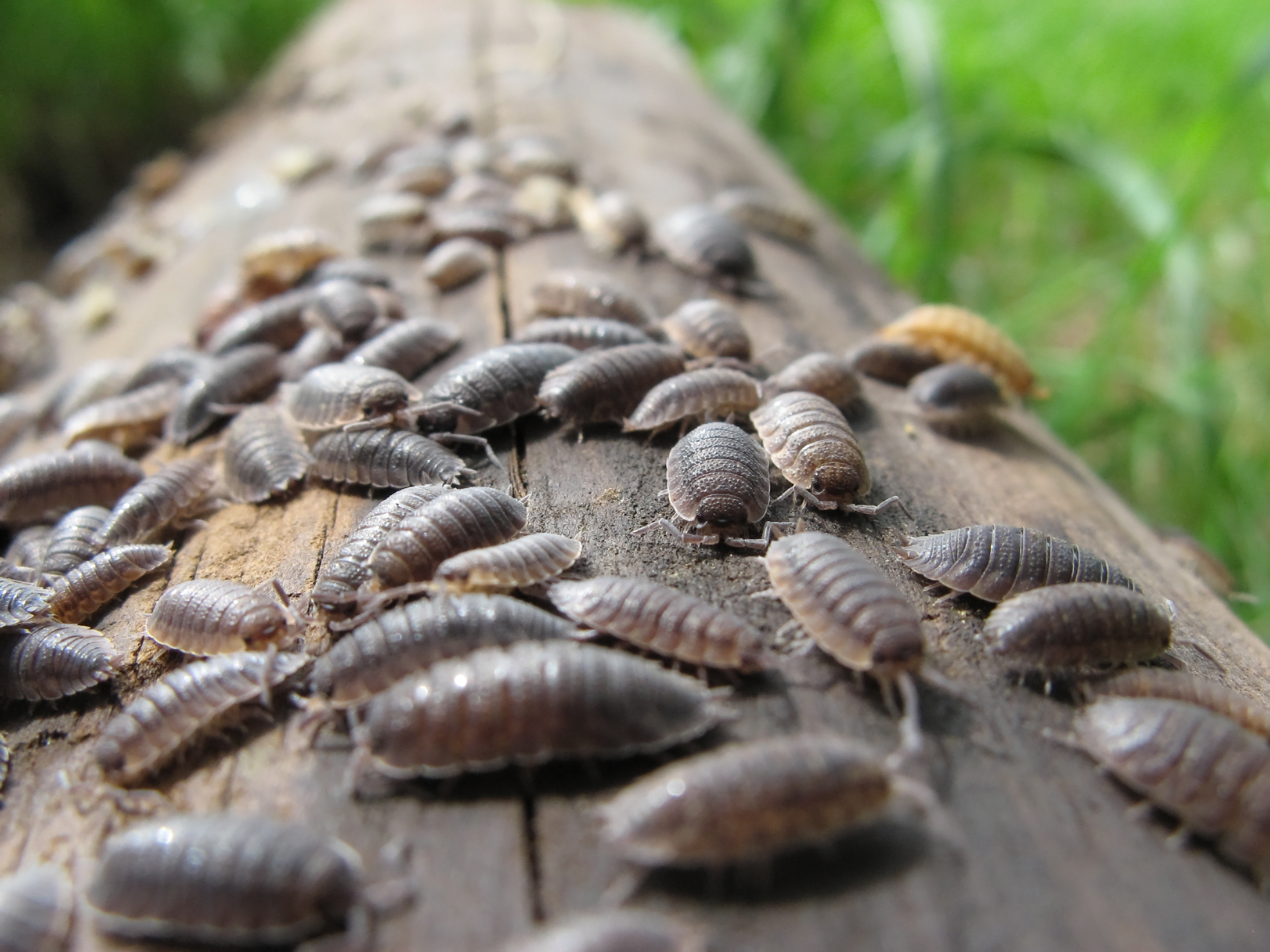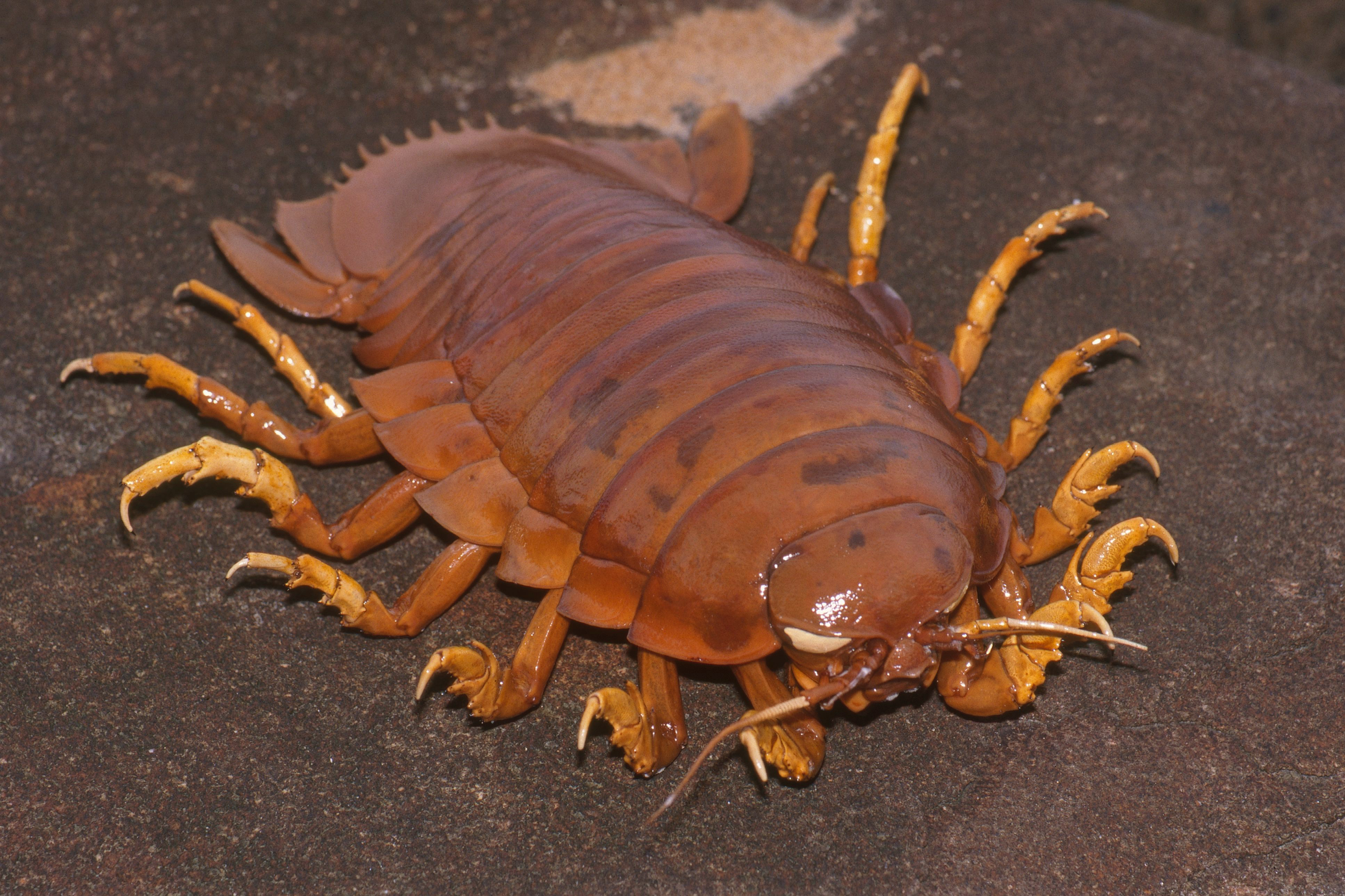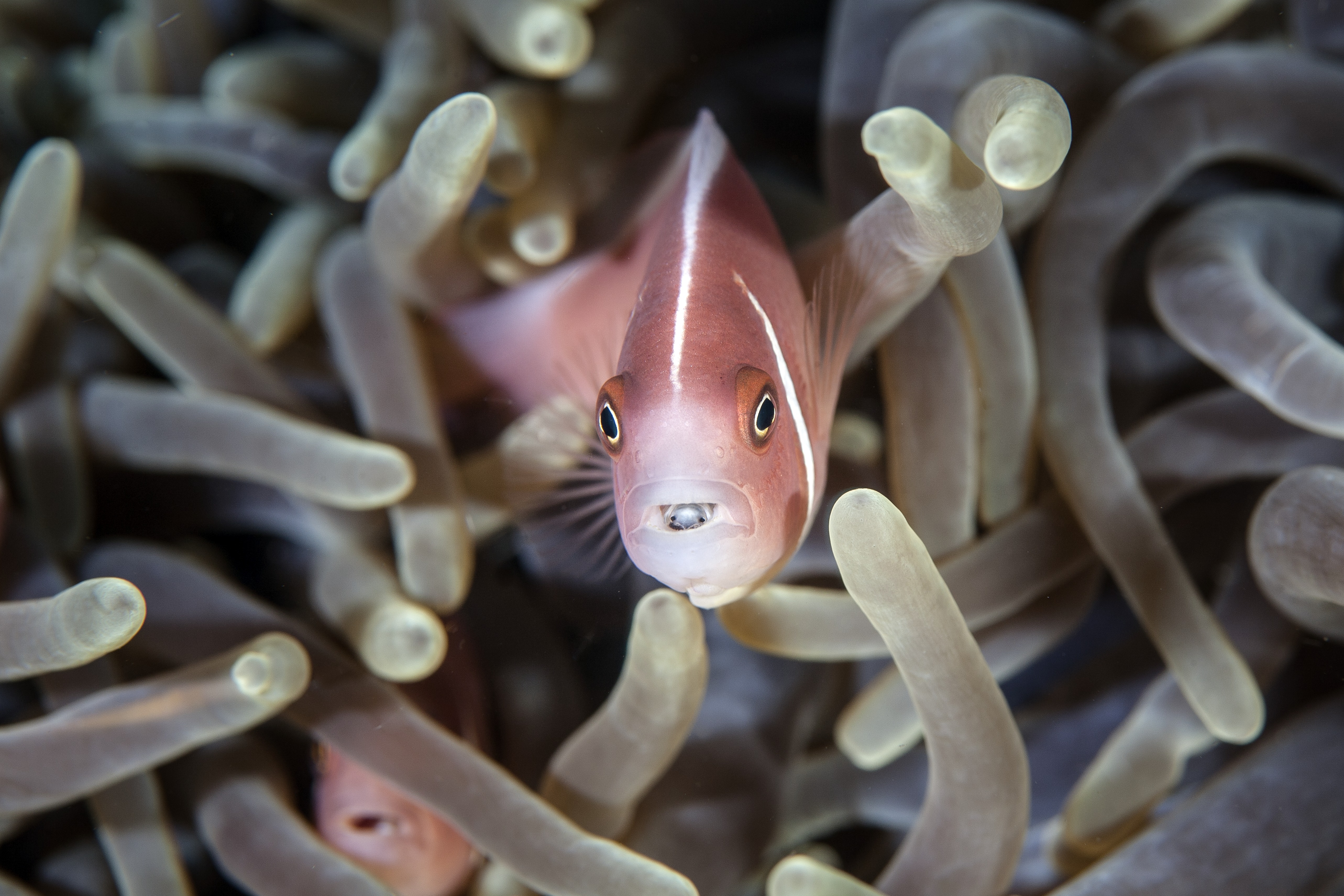Isopod is an animal that commonly has seven pairs of legs. The most familiar isopods are the small, buglike creatures called pill bugs, roly polies, or wood lice. But isopods vary in size. Isopods have segmented bodies and lack backbones. They are crustaceans, animals with a shell and jointed legs. An isopod’s legs are usually all the same shape and size, unlike those of most other crustaceans. Most isopods have a flattened body.

Giant isopod
Scientists have identified more than 10,000 species (kinds) of isopods. About half of these species live on land, and half live in the water. Most aquatic (water-dwelling) isopods live in the ocean, though hundreds of species live in fresh water. Isopods are found in all ocean environments, including the deep sea. On land, they are usually found in damp habitats, as most isopods dry out fairly readily.
The largest isopods can grow to more than 2 feet (60 centimeters) long. These isopods live in the deep sea. They are sometimes called giant isopods. The smallest isopods reach about 1/25 inch (1 millimeter) long.

Many aquatic isopods live as parasites for part or all of their lives. They may be parasites on fish or such crustaceans as crabs and lobsters. Certain isopods, for example, enter the mouth of a fish and cause its tongue to wither away. The isopod then takes the place of the tongue, living in the fish’s mouth. This way of life enables the isopod to take food that the fish eats, and the fish’s mouth provides shelter. Other isopods are predators (hunting animals) or feed on plant matter. Many isopods, including those that live on land, feed on decaying plant and animal matter. This matter includes feces (solid waste).

Female isopods lay their eggs in a brood pouch or marsupium on the underside of the body. In most species, the eggs hatch into miniature versions of the adult. Among parasitic species, the young usually appear quite different from the adults. They also are often parasites of different hosts than are adults. Many freshwater isopods are threatened by water pollution and other damage to their habitat.
